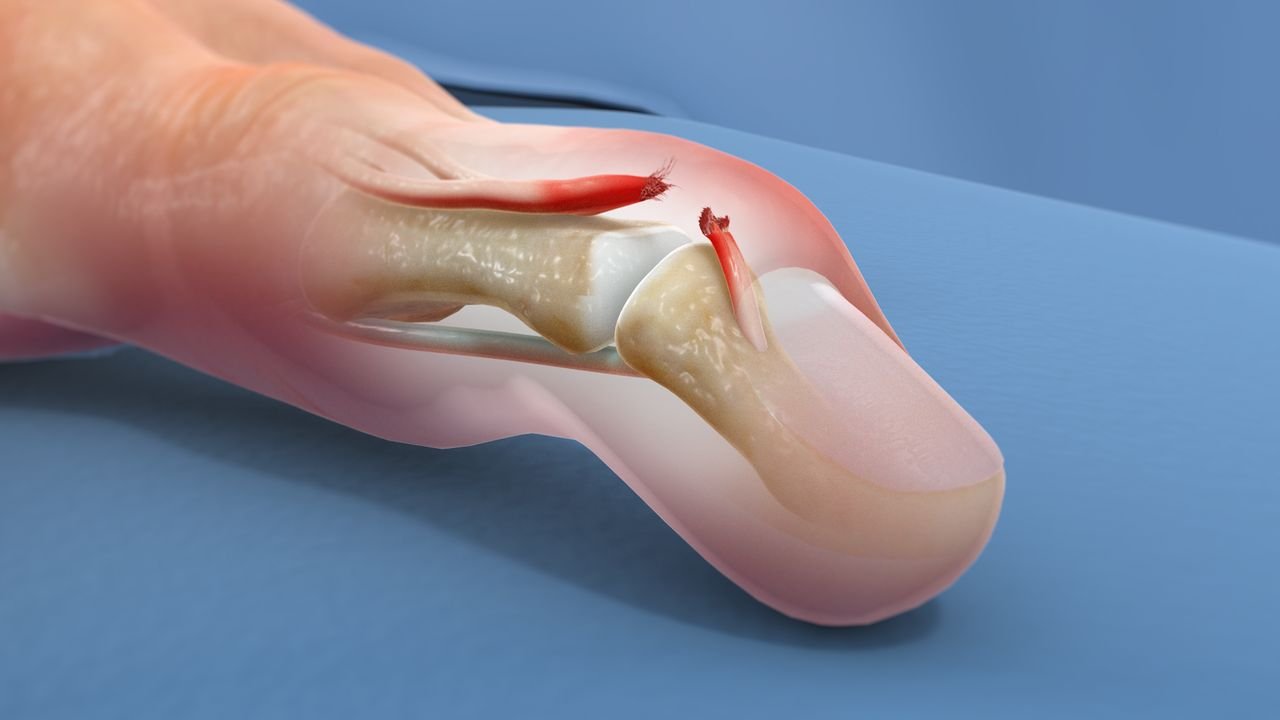Lajpat Nagar Metro Station, Block M, New Delhi, 110024
|096506 82102

Mallet Finger : An Overview
Mallet finger, also known as baseball finger, is a condition where the
extensor tendon
controlling the
distal joint of the finger is damaged, typically due to trauma or forceful impact. This
injury commonly
occurs when an object strikes the tip of the finger or thumb, forcing it to bend
unnaturally.
Treatment for mallet finger may include splinting the affected finger in a
straight
position to allow the
tendon to heal properly. In some cases, surgical intervention may be necessary to repair
the damaged
tendon.
When Do You Need Treatment for Mallet Finger?
Our primary treatment modalities include pain medication and physiotherapy following the diagnosis of your condition. Our spine specialists may recommend additional treatments if these initial approaches fail to deliver the desired outcomes. Early intervention is recommended for the following symptoms:
- 1. Inability to fully extend the affected finger
- 2. Pain and swelling at the tip of the finger
- 3. Visible deformity or drooping of the fingertip
- 4. Difficulty gripping or holding objects with the affected finger activities
- 5.Persistent pain and stiffness despite rest and home care
- 6.Limited range of motion in the affected finger joint
→Pre-Surgical Care For Mallet Finger
Treatment
→ What to Expect During Mallet Finger
Treatment
→Guidelines For Post-Treatment Care
Proper preparation before mallet finger treatment is crucial for a successful outcome and recovery.
- Consult with your doctor to assess your overall health and discuss any pre-existing conditions.
- Inform your doctor about any medications you are taking, including supplements and over-the-counter drugs.
- Follow your doctor's instructions regarding fasting before the treatment.
- Prepare your home environment for your return after treatment, ensuring comfort and safety.
- During mallet finger treatment, you will receive local or general anesthesia depending on the severity of the injury and treatment approach.
- The procedure typically takes a short time, and you may return home the same day.
- After the treatment, you may experience mild discomfort or swelling, which can be managed with pain medication and rest.
- Following mallet finger treatment, it's essential to follow your doctor's post-care instructions carefully.
- Keep the affected finger elevated and avoid putting pressure on it to promote healing.
- Attend follow-up appointments as scheduled to monitor your progress and adjust treatment if necessary.
- If you experience any unusual symptoms or complications, contact your doctor immediately for guidance.
Understanding Mallet Finger Treatment
Mallet finger
treatment offers a non-invasive approach to correcting deformity and
restoring function to the affected finger. Unlike traditional surgical
methods, mallet finger treatment involves splinting or casting the finger to
allow the tendon to heal in the correct position, avoiding the need for
surgery and its associated risks.
Mallet finger treatment is generally considered safe and non-invasive.
However, as with any medical procedure, there are potential risks and
complications, including:
- Pressure sores or skin irritation from prolonged splinting
- Inadequate healing or persistent deformity
- Discomfort or stiffness in the finger
The duration of
mallet finger treatment varies depending on the severity of the injury and
the chosen treatment approach. In general, splinting or casting may be
required for several weeks to allow the tendon to heal properly. Your
healthcare provider will monitor your progress and adjust the treatment plan
as needed.
